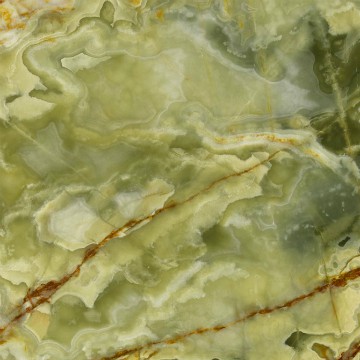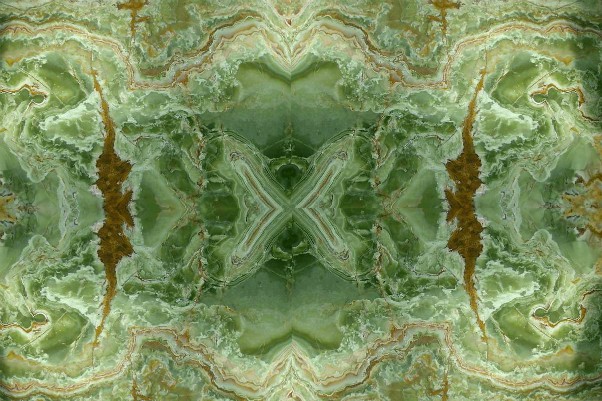Green Onyx

Green onyx originates from several villages to the South of the Chagai mountains in Baluchistan, Pakistan. These mountains were created due to volcanic activity during late Miocene1 and Pleistocene2 times. This supplied the geothermal heat for the hot springs which deposited huge quantities of onyx. These deposits spread in a broad band across Baluchistan and across the borders into Iran and Afghanistan. Currently there are still huge reserves of Pakistani onyx available for quarrying.
Geologically green onyx is a compact banded travertine composed of very fine-grained calcite. As the name suggest it is green in colour, but also contains varying amounts of milky white patches as well as translucent green and oxide markings. These oxide markings can vary from red to an orangey brown colour. The way these oxide markings are formed is from the oxidation3 of the onyx caused by the circulation of ground water. The agate-like bands create a stunning effect which adds to the beauty of green onyx. You can see these agate-like bands from oxidation in the book-matched green onyx slabs below.

Of all the green onyx slabs the one's which contain dark green markings are the most coveted. Green onyx can be seen in use in a number of settings including in onyx dining tables, decorative cladding, columns, flooring and onyx coffee tables. It can also be used for features walls in applications such as luxury bathrooms.
However you want to use green onyx, be it as a stand alone feature piece like the wall clad with green onyx tiles in the image below. Or a single item of luxury furniture. All the way through to being the core material used in your design theme, you can be confident green onyx will bring beauty and a wow factor to any room in which it is situated.
Products in this Material